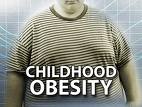 Obesity has more than doubled in children and quadrupled in adolescents in the past 30 years, according to the U.S. Centers for Disease Control. Now a new systematic review has found that even more youth may be classified as obese.
Obesity has more than doubled in children and quadrupled in adolescents in the past 30 years, according to the U.S. Centers for Disease Control. Now a new systematic review has found that even more youth may be classified as obese.
The analysis, written by researchers at the Mayo Clinic, included 37 studies that compared tools used to measure body fat in youth. It included more than 50,000 participants ages 4 to 18. The review concluded that using body mass index – the most common measurement tool for body fat – to may miss up to 25 percent of kids who have excess body fat.
Body mass index, or BMI, is an estimated measurement of body fat based on an individual’s height and weight. But children’s height and weight don’t increase proportionally as they grow, rendering BMI an inaccurate measurement for young people.
The review found that other techniques, such as skin-fold thickness, yield more accurate results for measuring body fat in children. But these tools are more difficult to implement in large-scale settings, like school clinics. Currently, the U.S. Centers for Disease Control and Prevention and the American Academy of Pediatrics recommend using BMI to screen for obesity in children starting at 2 years old.
This new review adds to existing evidence that children in the U.S. lead unhealthy lifestyles. The current data, which use BMI as the primary measurement tool, estimated that nearly 18 percent of children and 21 percent of teens are considered obese. Over the long-term, these young people are more at risk for bone and joint problems, cardiovascular disease and cancer.
More research is needed to identify evidence-based programs that can help young people lose weight. In the meantime, it’s important for families to encourage healthy eating and strive for an active lifestyle.



Speak Your Mind